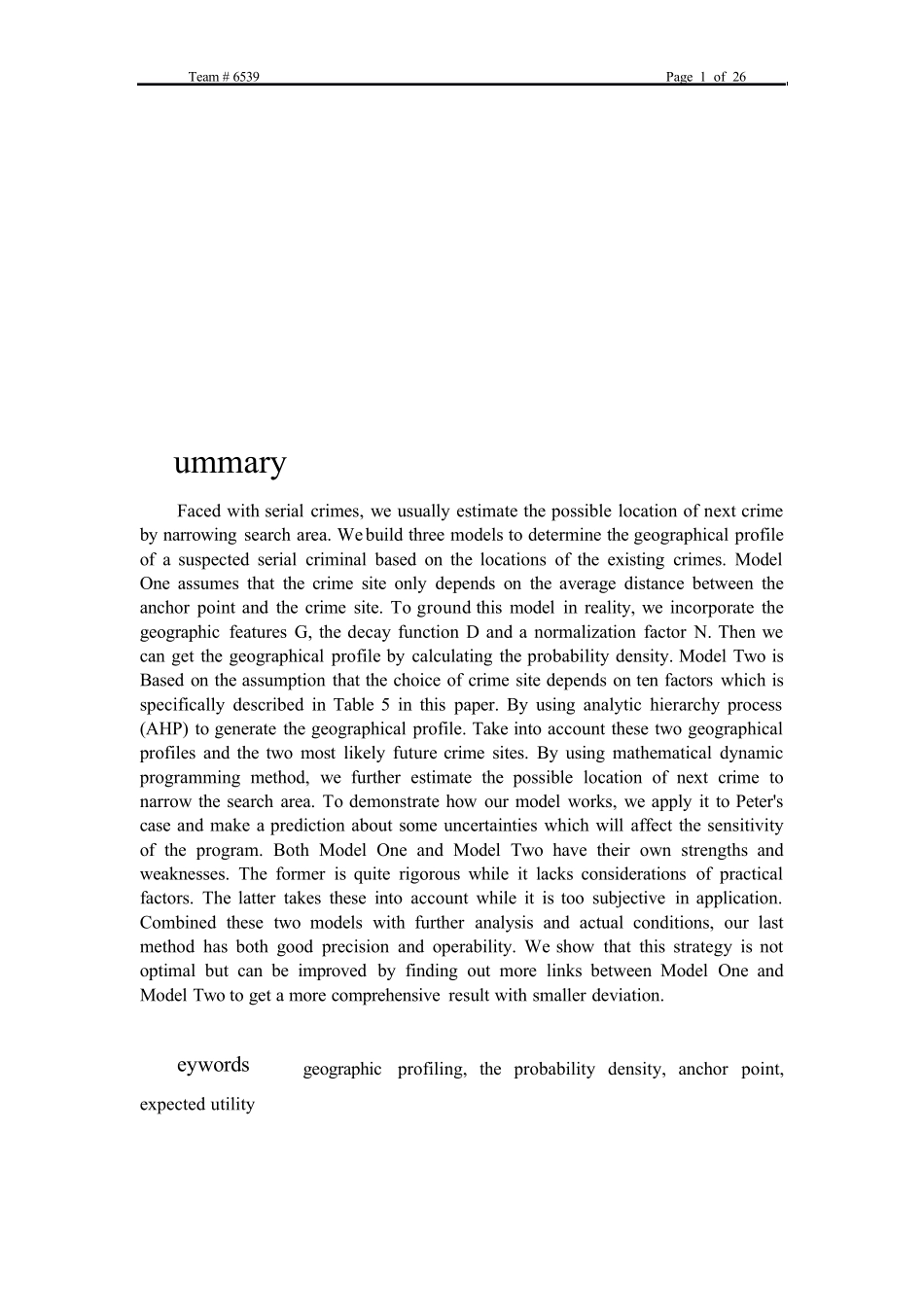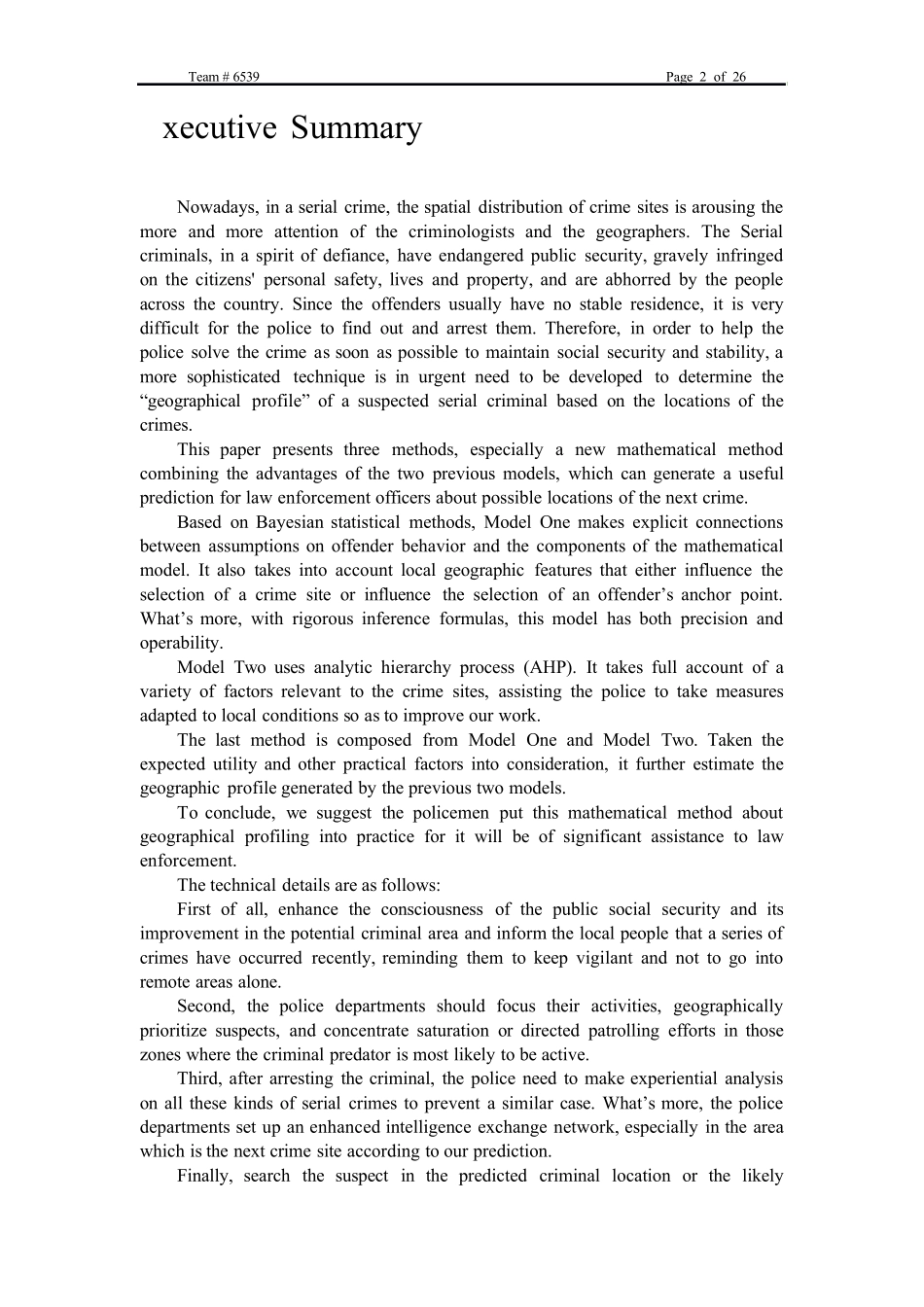Team # 6539Page 1 of 26SummaryFaced with serial crimes, we usually estimate the possible location of next crimeby narrowing search area. Webuild three models to determine the geographical profileof a suspected serial criminal based on the locations of the existing crimes. ModelOne assumes that the crime site only depends on the average distance between theanchor point and the crime site. To ground this model in reality, we incorporate thegeographic features G, the decay function D and a normalization factor N. Then wecan get the geographical profile by calculating the probability density. Model Two isBased on the assumption that the choice of crime site depends on ten factors which isspecifically described in Table 5 in this paper. By using analytic hierarchy process(AHP) to generate the geographical profile. Take into account these two geographicalprofiles and the two most likely future crime sites. By using mathematical dynamicprogramming method, we further estimate the possible location of next crime tonarrow the search area. To demonstrate how our model works, we apply it to Peter'scase and make a prediction about some uncertainties which will affect the sensitivityof the program. Both Model One and Model Two have their own strengths andweaknesses. The former is quite rigorous while it lacks considerations of practicalfactors. The latter takes these into account while it is too subjective in application.Combined these two models with further analysis and actual conditions, our lastmethod has both good precision and operability. We show that this strategy is notoptimal but can be improved by finding out more links between Model One andModel Two to get a more comprehensive result with smaller deviation...


